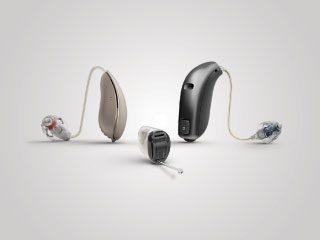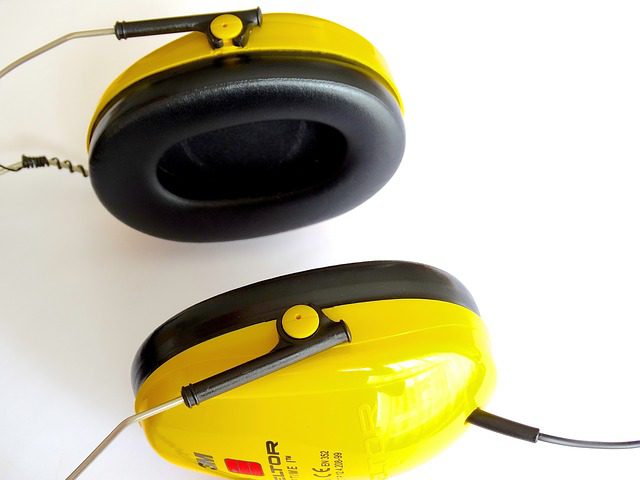Better Hearing Blog

Breaking the Feedback Cycle
One of the primary complaints of older hearing instruments revolved around the problem of “acoustic feedback,” which occurs when some of the amplified sound leaks from the ear canal back into the microphone and becomes re-amplified. This cycle of leakage and re-amplification (known as the “feedback cycle”) results in a loud squealing sound that wearers find disconcerting, to say the least. While this problem used to be addressed by increasing the acoustic seal of earmolds, the fix often proved uncomfortable. The good news is that today’s hearing instruments have “adaptive feedback cancellation” systems, which constantly monitor the part of the signal played back by the receiver that returns to the microphones and remove it before it is re-amplified.
We offer an array of affordable hearing aid options to meet every budget, cosmetic and hearing loss need. We use a personalized approach in recommending hearing aid options to best meet every patient’s preferences. For more information, please call BETTER HEARING CENTER. We are the only hearing center that has served the Concord, New Hampshire, area for more than 55 years. New Hampshire’s premier hearing care provider.
P.S. Adaptive feedback cancellation can also play a role in “echo cancellation,” which removes the echo from vocal sounds, thereby improving the voice quality of telephone communications.

The Cocktail Party Effect
The term “cocktail party effect” refers to the human ability to focus on a single speaker while tuning out noisy background noise. Research indicates that the left side of our brains picks out the desired sounds from the background noise. This makes sense when you take into account that speech signals are processed in the left brain. When researchers monitored the brain’s response to different sound combinations, it was observed that the left hemisphere displayed the most neural activity associated with processing sounds in a noisy setting. While no one is suggesting that today’s highly sophisticated hearing instruments are on a par with the brain when it comes to picking out desired sounds in noisy environments, they do remarkably well.
Hearing loss is a common health concern for many people, and it can result from a number of different causes. The good news is that some types of hearing loss are preventable. With just a few small changes in habit and increased awareness, the effort to preserve your hearing can have a big payoff in the future. To schedule a hearing assessment, please call BETTER HEARING CENTER. We’re excited to assist you in making decisions about your hearing health at New Hampshire’s premier hearing care provider.
P.S. The more formal term for the ability to focus on a specific source amidst the din of a crowded room is “selective hearing.”

The Most Popular Hearing Instrument
According to recent statistics released by the Hearing Industries Association (HIA), “open-fit” hearing instruments now account for more than half of all hearing instruments sold in the United States. This category, which includes “receiver-in-the-canal” (RIC) and “receiver-in-the-ear” (RITE) instruments, has a microphone and sound processor housed in a casing that sits behind the ear, much like a “behind-the-ear” (BTE) instrument. However, unlike a BTE, the ear portion of an open-fit instrument has a small wire running around the ear and into the ear canal at the end of which is the “receiver” with a speaker. Because the sound processor and receiver are separate, an open-fit housing residing behind the ear is sleeker and the entire instrument is more comfortable to wear.
Modern hearing aids are small high-tech computers, which are constantly being refined and developed to provide a better reproduction of natural human hearing. Hearing aids help put people back in touch with their family and friends by letting them enjoy participating in social activities again. To schedule an appointment, please call BETTER HEARING CENTER. New Hampshire’s premier hearing care provider.
P.S. Separation of the open-fit instrument’s receiver into its own compartment has the advantage of rendering feedback and occlusion much less of a problem.

Abnormally Loud
Sometimes we may raise our voices only slightly to get the attention of a person with hearing loss, only to have that person respond, “You don’t have to yell. I’m not deaf!” This type of encounter provides anecdotal evidence of a phenomenon known as “recruitment,” which is an abnormally large increase in the perception of loudness with only a slight increase in the actual intensity of the sound. This phenomenon occurs when normal hair cells adjacent to damaged hair cells (corresponding to the frequency of a hearing loss) are “recruited.” At the decibel level at which these normal hair cells kick in, perceived loudness shoots up rapidly, causing discomfort. The best treatment for this problem is a hearing instrument.
Although hearing instruments do not restore your hearing to normal, they improve it significantly. They improve a person’s social, psychological and physical sense of well-being. To schedule a hearing assessment, please call BETTER HEARING CENTER. We are the only hearing center that has served the Concord, New Hampshire, area for more than 55 years. New Hampshire’s premier hearing care provider.
P.S. “Hair cells” are found in the cochlea, where they help convert sound waves into neural signals that are sent to the brain.

Tumor-Induced Hearing Loss
An “acoustic neuroma,” the most common inner ear tumor, begins growing within the inner ear. “Vestibular schwannoma,” as the tumor is also known, forms when Schwann cells, which wrap themselves in layers around the auditory nerve, grow too rapidly. It is important to recognize the early symptoms of acoustic neuroma (dizziness, hearing loss, and ringing in the ears) and treat it because the tumor may grow so large that it can press on parts of the brain that control vital body functions. Most acoustic neuromas are treated with surgery. From a preventive point of view, some research shows that prolonged exposure to loud noise increases the risk of developing acoustic neuroma, which is one more reason to wear hearing protection.
Early diagnosis of an acoustic neuroma may help keep the tumor from growing large enough to cause serious consequences, such as total hearing loss or a life-threatening buildup of fluid within your skull. BETTER HEARING CENTER offers an array of affordable hearing aid options to meet every budget, cosmetic, and hearing loss need. We’re excited to assist you in making decisions about your hearing health at New Hampshire’s premier hearing care provider.
P.S. Hearing rehabilitation through the use of hearing instruments and assistive listening devices can enhance an acoustic neuroma patient’s ability to communicate with others and significantly improves a patient’s quality of life.

Surfer’s Ear
Anyone who regularly swims in cold ocean water or other chilly natural bodies of water may be surprised to learn about “external auditory exotosis” (otherwise known as “surfer’s ear”). This condition, which is essentially a buildup of bone in the ear caused by repeated exposure to cold water and wind, can be induced by any cold water activity. The closure of the ear canal associated with surfer’s ear is six times more likely to be found among people who surf in cold water. The problem develops because the ear is the only place in the body where skin is directly on top of bone. Without insulation, cold water stimulates bone growth, increasing the likelihood of ear infections and hearing loss.
Some exostoses do not require surgical treatment, but once these have been diagnosed, it may be wise to protect the ears from cold water exposure using ear plugs or a neoprene headband or hood. To schedule an appointment or to learn more about this condition, please call BETTER HEARING CENTER. We are New Hampshire’s premier hearing care provider.
P.S. Surfer’s ear can occur in any activity with cold, wet, windy conditions, including windsurfing, kayaking, sailing, jet skiing, kitesurfing, and diving.
